Egyptian mummies and Hebrew perfume
Ancient chemists were smart, and well connected
Important new discoveries are constantly rising from the sands of Egypt. Many of these come from an ancient necropolis1 at Saqqara,2 located near modern Cairo. Many thousands of burials have been found here, and are still being found, including the tombs of pharaohs, princes and princesses, priests, wealthy artisans, and even commoners. The famous Step Pyramid of Djoser3 dominates the skyline at Saqqara, but many more wonders lie just beneath the surface. Saqqara was regarded as a special or holy site to be buried, thus it was used as a necropolis for over 2,000 years of Egyptian history.
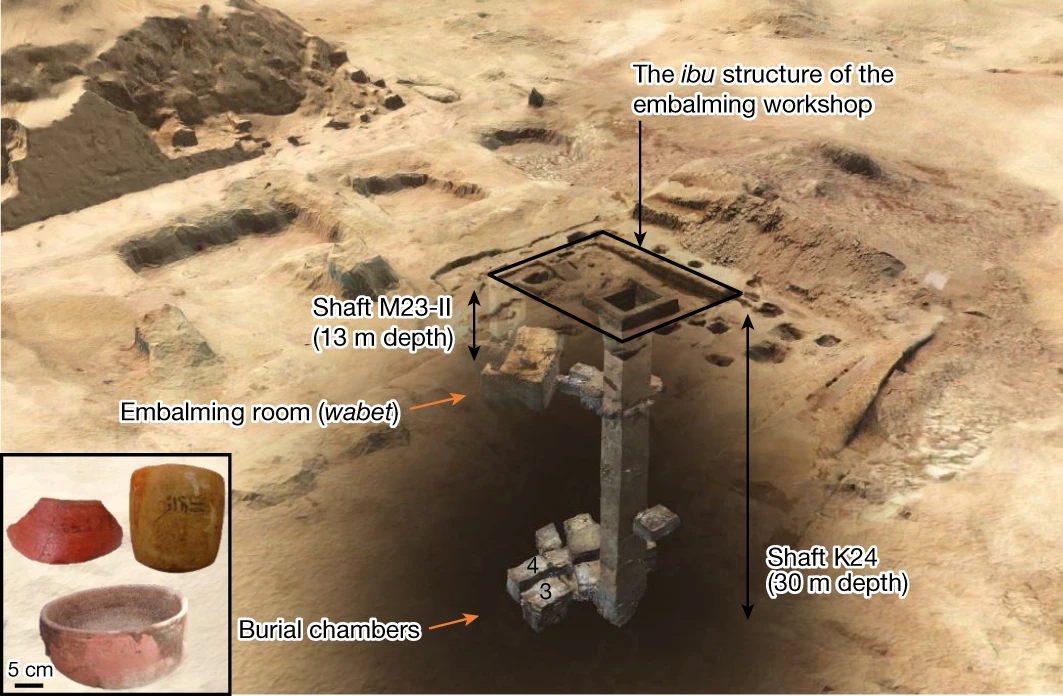
Recent work in the area has revealed a mummification center (think funeral parlour) where bodies were cleaned, dried, coated inside and out with resins, wrapped, and buried. Interestingly, they also discovered multiple jars with the remains of ancient embalming resins, and many of those jars were labeled. This has provided fascinating insights into multiple aspects of chemistry, botany, and ancient global trade connections.
The chemistry of mummification
Egypt is a hot place and bodies don’t last long before they start to decay. When preparing a body for burial, the first things the ancient Egyptians did was remove some of the internal organs. This would have slowed the process of putrefaction. The body was then dried out by burying or covering it in natron.4 The mummy of Pharaoh Seqenenre-Taa II,5 which is now in the Egyptian Museum of Civilization, shows obvious signs of decay prior to mummification. This is not surprising, being that he died on a battlefield in northern Egypt, far from the royal embalmers near the Valley of the Kings, which lies several hundred miles to the south. His mummified skull still shows the axe wounds that killed him during his battle with the Hyksos.
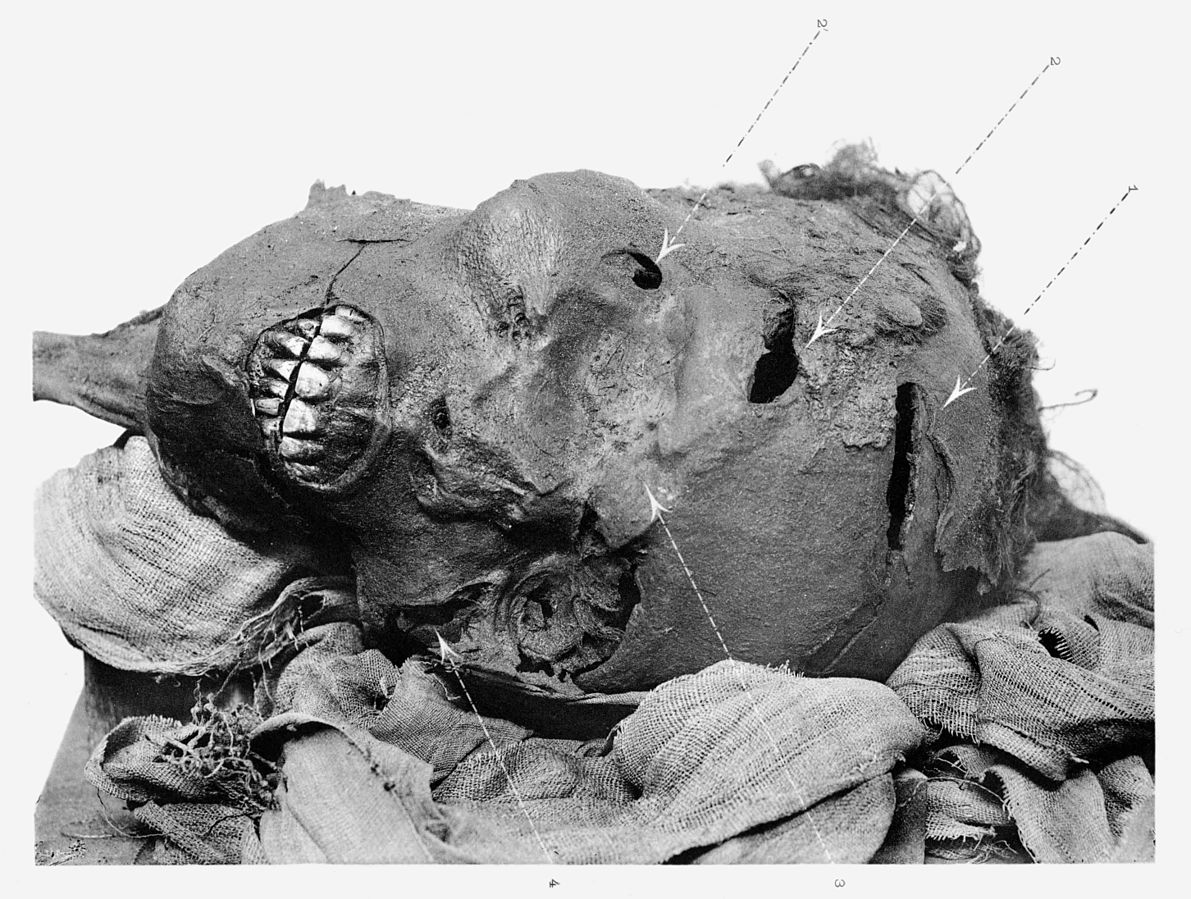
Egyptian mummification styles and techniques changed over time. There were also different qualities of mummification available at any one time, depending on how much money a person had to spend on their burial. A mummy housed in the Niagara Falls Museum in Canada for 140 years was obviously of a high-born individual who was mummified in the fashion of royal 19th Dynasty pharaohs. The museum at Emory University (Atlanta, USA) obtained the mummy in 1989 and promised to repatriate it to Egypt if it could be shown to be a royal mummy. Apparently, the archaeologist in charge of receiving the mummy in Atlanta knew it was a royal mummy just from the way it smelled. Most scholars believe this is the body of Rameses I, founder of the 19th Dynasty of Egypt and grandfather to the famous Rameses II (‘Rameses the Great’). It is now resting in the Luxor Museum, Egypt.
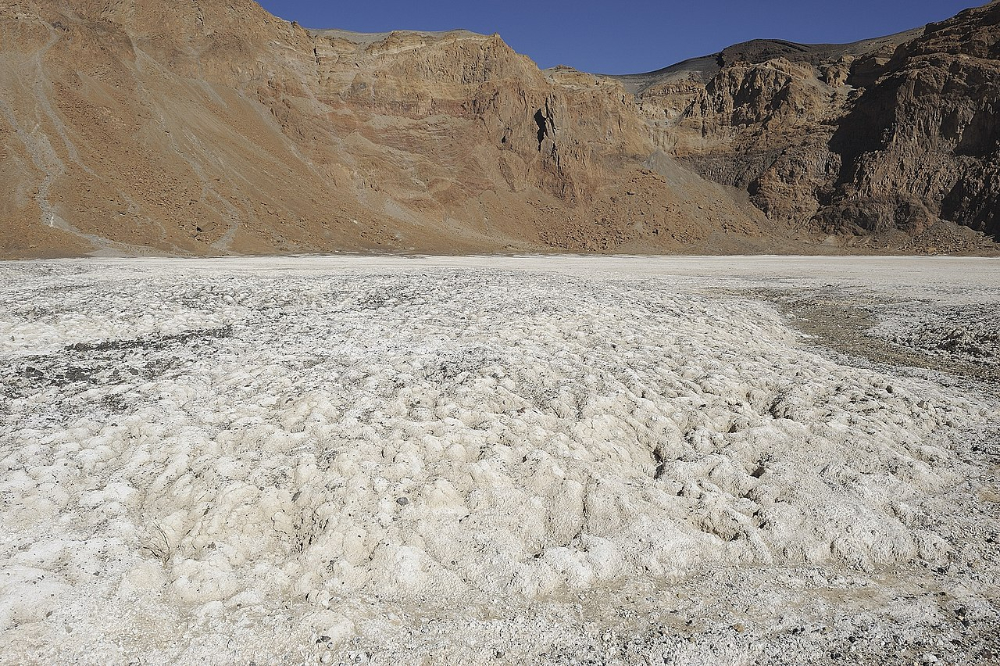
Yet, the ‘smell’ of the mummy depends on the substances used to preserve it and how those substances have held up over the past several thousand years. They usually just smell ‘musty’, which is not surprising, as the aromatic molecules used in their preservation usually evaporated long, long ago. Many of those substances, however, are now known to have antibacterial and antifungal properties.
The discovery of the mummification workshop has taught us a lot about ancient Egyptian embalming practices. The dates ascribed to the site are 664–525 BC. This is the Late Period of Egypt, long after the Pyramids were built and just prior to the conquering of Egypt by the Persians at the end of the 26th Dynasty. We would generally agree with dates ascribed to the latter periods of Egyptian history, such as this one. Caution is always warranted, however, when dealing with Egyptian dating, and particularly when extrapolating back into even more remote history. However, there was a long history of mummification in Egypt, and from the consistency of the evidence, we can assume that the knowledge and practices were passed on from one generation to the next with little interruption.
Enter modern science
By scraping small bits out of the inside of the vessels the embalmers left behind, it was possible to analyze the chemical constituents of what was in each pot. They did this with a gas chromatogram-mass spectrometer (GCMS). By running the extracts through a long tube which is filled with a material (e.g., phenyl polysiloxane) that some of the molecules are more attracted to than others, the chemicals naturally separate according to how fast they diffuse. At the end of the diffusion tube, the chemicals are ionized, fragmented, accelerated, and shot at the mass detector. Any given complex chemical will create a characteristic spectrum on the machine’s output. By referencing a library of known chemicals, one can take a mixed assemblage of chemicals (for example, plant sap) and tease out the individual components. Thus, one can differentiate the chemical signature of frankincense (Boswellia spp.) and myrrh (Commiphora spp.) resins, even though these trees belong to the same family (Burseraceae, aka “incense tree family”).
When fresh, these aromatic resins contain different monoterpenes, sesquiterpenes, triterpenoids,6 ketones, and many other molecules. Yet, the most volatile molecules (e.g., the things that evaporate the most quickly and contribute to the smell) are absent in the ancient specimens. Even though the original material has changed a lot over the past several thousand years, molecules that are characteristic of specific plants were found. These are a dead give-away. They also detected changes in the molecular constituents that only come through heating. In other words, some of the recipes called for cooking some of the ingredients or ingredient mixtures.
Several major constituents of frankincense:


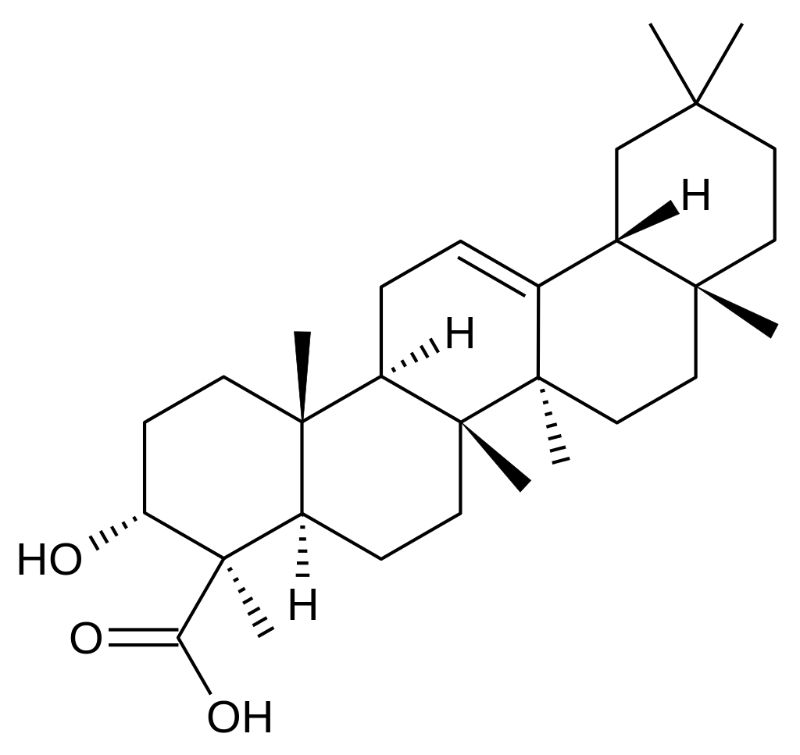
Mass spec results for several complex molecules

They found residues of extracts from juniper (Juniperus oxycedrus), cypress (Cupressus sempervirens), terebinth (Pistacia terebinthus), and cedar (Cedrus libani) trees, which can be found locally, as well as beeswax and animal fat. They also found bitumen from the Dead Sea. That was not surprising. What really caught people’s attention, though, was the identification of two ingredients: elemi and dammar. From the textual evidence, it was not clear what these things were. Their true nature was revealed when scientists examined the chemicals left behind in labeled pots. Elemi was derived from trees in the genus Canarium. There are about 100 species in this genus, but they only grow in the rainforests found across tropical Africa, South Asia, and the western Pacific islands. Dammar came from trees in the genus Shorea. The 200 species in this genus are only found in the tropical forests in southeast Asia (i.e., India and areas to the east). It was thought that another ingredient, antiu, was myrrh. Instead, it consisted of a mixture of cedar, juniper, cypress, and animal fat.7
Some of the pots were labeled with instructions, so we now know what they did with them. For instance, elemi was used “to make his odor pleasant”. Other materials were marked as “substance for the head” and “for making the skin beautiful”. We now know many of the plant and animal products used in the mummification process. We also know where those products are found in the world and so we can connect trade networks between Egypt and far-away places, including, quite possibly, the islands of Indonesia, which would be astonishing.
Relation to the Bible
The Egyptians were not alone in their knowledge of these plants or the trade routes from which they were obtained. Consider the passage in Genesis where Joseph is sent to look for his brothers:
So he [Jacob] sent him from the Valley of Hebron, and he [Joseph] came to Shechem. And a man found him wandering in the fields. And the man asked him, “What are you seeking?” “I am seeking my brothers,” he said. “Tell me, please, where they are pasturing the flock.” And the man said, “They have gone away, for I heard them say, ‘Let us go to Dothan.’” So Joseph went after his brothers and found them at Dothan.
The geography in this passage is very interesting. Jacob, like Abraham and Isaac before him, had settled in the area around Hebron. Today, it is a Palestinian city, located about 50 km (30 mi) south of Jerusalem. Hebron sits on a north-south road called The Way of the Patriarchs. This connected the main cities in the southern hill country of Israel, i.e., Beersheba, Hebron, Jerusalem, Bethel, Shechem, and Dothan. Thus, Joseph would have travelled along this road from Hebron in the South to Shechem in the north, then farther north to Dothan.
Shechem is about 50 km north of Jerusalem. This is the place where Abraham built an altar (Genesis 12:6–7), where Simeon and Levi murdered all the men after their sister Dinah had been defiled (Genesis 34), and where Jacob built an altar (Genesis 34:20). Later, it will be the place where Joshua exhorts the Israelites to “choose this day whom you will serve” (Joshua 24:15) and where a memorial stone will be set up (Joshua 24:26), where Joseph will be buried (Joshua 24:32), and where Solomon’s kingdom would be divided into the Kingdom of Judah and the Kingdom of Israel (1 Kings 12:1–20).
Dothan is just to the north of Shechem. It does not feature much in biblical history. It is the place where Joseph was sold into slavery and the place where the eyes of Elisha’s servant were opened so that he could see the mountain filled with horses and chariots of fire (2 Kings 6:16–17).
Geographically, though, Dothan is a very important location, for here is where international trade routes from three continents connected. Three routes came together here: The Way of the Patriarchs, The Way of the Sea (connecting to Egypt), and The King’s Highway (connecting to Damascus, then to Mesopotamia and/or Anatolia).
Any trade coming to Egypt from Mesopotamia would have first gone through Damascus. From there, people would travel south, either crossing the Upper Jordan at Hazor or further south, avoiding the Sea of Galilee and the surrounding hills, and crossing the Jordan at Beth-shan. They would now be in the Jezreel Valley, which was dominated by the city of Megiddo (Judges 1:27; 2 Kings 23:29; Revelation 16:16).

To get to Egypt, however, they would have had to cross a ridge of land connected to Mt Carmel, which dominates the coastland in the region. Any foot traffic from Phoenicia would also have to go around Mt Carmel. One important crossing point was at Dothan. This was the access point for the Plain of Sharon. From there, it is an easy, nearly sea-level walk all the way to Egypt.
The sons of Jacob were probably not just looking for a place to graze their flocks. They ended up at the most important junction of trade routes in all the land of Israel. It was here that goods from Philistia, Mesopotamia, Anatolia, Arabia, and even as far away as India and Indonesia travelled. The brothers had sheep. Think of these animals as mobile money. Sheep provided meat, wool, rams horns, milk (depending on the breed), and lanolin. These were all tradable commodities, so it was at Dothan that Joseph’s brothers could obtain both essential and luxury products from outside the Hill Country in which they lived. They also understood the slave trade and made use of it to rid themselves of their troublesome brother (Genesis 37:28).
Exotic spices in Israel
Israel was not an isolated country. They interacted with all the surrounding nations and, as we saw above, were connected to far-flung areas of the world. They were even connected to Spain and/or the British Isles, for these countries were a major source of the tin required for making bronze during the so-called Bronze Age (that is, the time of Moses [e.g., Exodus 30:18], Joshua, and the Judges). British and/or Spanish tin would have been used in the massive bronze items that Solomon (who lived in the ‘Iron Age’) commissioned for the Temple.8
In Genesis 43:11–12 we see an interesting list of products that Jacob told his sons to bring to ‘the man’ (Joseph) in Egypt. Some of these were locally produced, but others were exotic:
Then their father Israel said to them, “If it must be so, then do this: take some of the choice fruits of the land in your bags, and carry a present down to the man, a little balm and a little honey, gum, myrrh, pistachio nuts, and almonds. Take double the money with you.
Honey, pistachios, and almonds were all available locally. ‘Gum’ is a generic term that could apply to the sap of many different trees and shrubs. Balm (probably referring to a product made from the resin of the myrrh tree) could only have been obtained from outside the area. The genus contains about 190 species of trees and shrubs, some of which produce an aromatic sap. The closest sources are in Arabia, but they also grow in subtropical Africa, India, the islands in the western Indian Ocean, and South America.
We can also safely assume that Jacob did not mint his own coins and that the ‘money’ he sent was obtained from outside the borders of his land.
After the Israelites left Egypt, things get even more exotic. In Exodus 30:22–25 we read:
The Lord said to Moses, “Take the finest spices: of liquid myrrh 500 shekels [e.g., about ½ kg or 1 lb], and of sweet-smelling cinnamon half as much, that is, 250, and 250 of aromatic cane, and 500 of cassia, according to the shekel of the sanctuary, and a hin [e.g., 4.5 litres or 1 gal] of olive oil. And you shall make of these a sacred anointing oil blended as by the perfumer; it shall be a holy anointing oil.”
God gave Moses the formula for a perfume! He also ‘patented’ the perfume, pronouncing a death sentence on anyone who would make it or use it outside the Tabernacle (Exodus 30:33). In Exodus 30:34–38, God also told Moses to make an incense (‘patenting’ it as before):
The Lord said to Moses, “Take sweet spices, stacte, and onycha, and galbanum, sweet spices with pure frankincense (of each shall there be an equal part), and make an incense blended as by the perfumer, seasoned with salt, pure and holy.”
This is fascinating. Many of these ingredients were not found in the wilderness in which they were living, nor indeed in the land of Israel to which they were going. They must have had been trading with outsiders while they were in the wilderness, as one may assume they did not bring enough frankincense out of Egypt to last 40 years.
Here’s a short Hebrew dictionary to help explain these passages:
- The word spices [בְּשָׂמִ֣ים, besāmîm] is translated variously as balsam, spices, perfume, etc. It shares the same root word with other words in this passage: sweet-smelling [בֶּשֶׂם, besem], aromatic [בֹ֖שֶׂם, bosem], and sweet spices [סַמִּ֗ים, sammîm].
- Myrrh [מָר, mar] is a bitter-tasting resin derived from several trees in the genus Commiphora. The name is derived from the root word for bitter (hence, the bitter waters of Marah in Exodus 15:23–35 and the mysterious log that cured the water of its bitterness). Yet, in its natural form, myrrh is a solid. The word translated liquid [דְּרוֹר, dərôr] comes from the root word for pearl. That is, pearls of myrrh dissolved in olive oil are ‘liquid myrrh’.
- Cassia [קִדָּה, qiddah] refers to a genus of tree from which cinnamon קִנָּמוֹן, qinnamôn] is derived. Cinnamon is probably a loan word from the far east, where the bark of Cinnamomum zeylanicum and C. cassia trees were (and still are) harvested to make the familiar cinnamon spice. Different parts of the tree and different qualities of bark produce spices of various pungencies. Thus, the formula for the anointing oil contained both cassia and cinnamon, but we cannot be certain what forms of the cassia tree are being referred to.
- Cane [קָנֶה, qaneh] is probably the sweet reed, Acorus calamus. The word is translated as cane, branch, calamus, and shaft. It is probably not referring to papyrus (גֹּמֶאִ, gome’), although a pleasant-smelling oil can be distilled from it.
- Olive [זַ֖יִת, zayith] is easy. This is oil pressed from the fruit of olive trees, Olea europaea, which are common and abundant throughout the Mediterranean area.
- Stacte [נָטָף, nataph] comes from the root word for drop, as in the form of the sap. This might be a type of myrrh.
- Onycha [שְׁחֶלֶת, shecheleth] is a word that appears only once in Scripture. Some have suggested that this refers to the operculum (i.e., the closing flap) of a snail, since this is quite aromatic in some species.
- Galbanum [חֶלְבְּנָה, chelbenah] also only appears once in the Bible. We are not certain what the word means, although there are many theories that link it to various aromatic plants.
- Frankincense [לְבוֹנָה, lebônah] clearly refers to the aromatic resin obtained from trees in genus Boswellia. A major component of frankincense is called boswellic acid, although this is not present in the steam-distilled frankincense essential oil. The Hebrew word derives from the root word for ‘white’, probably referring to the color of the smoke when it is burned. The trees and shrubs in this genus only grow in the tropical regions of Africa and Asia, e.g., far from Israel. Boswellia sacra is probably the source of this spice. It grows in the low lying (below 1200 m) arid woodlands of Oman, Yemen, and Somalia. The sap is collected by cutting the bark and collecting the milky sap, which coagulates when exposed to air.
Onycha and galbanum are each an example of a hapax legomenon, or a word that only appears once. There are over 600 such words in the New Testament alone, including the word inspiration θεόπνευστος (translated alternatively as ‘inspiration of God’ [KJV] or ‘breathed out by God’ [ESV] in 2 Timothy 3:16. There are 400 hapaxes in Old Testament Hebrew, including these two examples.
Such words have always been a source of discussion among scholars. The translators of the King James Bible were well aware of words like this, and wrote about them in their introduction From the Translators to the Reader:
There be many words in the Scriptures, which be never found there but once (having neither brother nor neighbor, as the Hebrews speak), so that we cannot be helped by conference of places. Again, there be many rare names of certain birds, beasts, and precious stones, etc. concerning which the Hebrews themselves are so divided among themselves for judgment, that they may seem to have defined this or that, rather because they would say something, than because they were sure of that which they said…9
In modern English, they are saying that the definition of a word that appears but once cannot always be known for certain, especially since we cannot compare its use in other places in the Bible. This is one reason that different translations of the Bible might use different words in the same place. From context, we can almost always know what the word is describing, for example, an animal, a mineral, or a plant, but which thing is being described is often debated. Translators will also often use a word that is more familiar to their intended readers (e.g., English speakers), which obscures the proper identification of the thing in question. If you are struggling with the concept that there might be words in the Bible that we cannot define today, please see The inspiration of Scripture comes in various forms.
When discussing the composition of the anointing oil and incense used in the Tabernacle (and, later, the Temple), we can only make educated guesses. However, it is not like we have no clues as to the identity of the ingredients. For example, over 125 different plants are named in the Bible, but not all of them (e.g., oaks) produce aromatic substances.
By comparing the biblical text, references to plants in other ancient writings (e.g., Jewish, Egyptian, and Mesopotamian), modern uses of plants in traditional regional folk medicine, and the modern distribution of plants, scholars have painstakingly worked out lists of known, suspected, and dubious identifications from the Bible. For example, we can be quite certain of the identifications of fig (Ficus carica), hyssop (Origanum syriacum), balm (Commiphora sp., e.g., myrrh), mandrake (Mandragora officinarum), and nard or spikenard (Nardostachys jatamansi).10 Nard, a plant in the honeysuckle family (Caprifoliaceae), only grows in the eastern Himalayas above 3,000 m (9,800 ft). No wonder it was expensive (John 12:3–8)!
Some plants could have more than one name in the Bible, and we might have different names for different parts, preparations, or uses of the same plant (e.g., cinnamon comes from the cassia tree). Either way, have you ever considered what the Temple would have smelled like? The building was made of cedar; it was filled with the smoke of frankincense, onycha, galbanum, and myrrh; and the walls, implements, and people (and their clothing) were liberally sprinkled with a mixture of cinnamon and the oil from an aromatic cane. In your mind’s eye, add the smell of smoke and grilled meat. The olfactory effect would have been profound.
In the end, discoveries in ancient Egypt have helped shed light on the biblical text. It really is amazing to consider how the people in the Bible interacted with others from the far-flung corners of the world: how a poor person who peeled the bark off a tree in a tropical Pacific rainforest would have made a contribution to the smell of the Tabernacle of Moses; how a slave digging tin out of a pit in England would have contributed to the construction of the pillars, ‘sea’, and bulls of bronze erected at the Temple; and how a rag-tag group of semi-nomadic herdsmen took their flocks to the world’s superhighway, sold their brother to some slave traders for a few coins, and changed world history.
References and notes
- The word necropolis means “city of the dead” in Greek, i.e., a graveyard. Return to text.
- The complex is located just a few meters to the south of the decayed pyramid of the last king of the 5th Dynasty, Unas. During CMI’s tours of Egypt (2022), we visited here, awing over the beautiful 3D relief carvings inside the tomb, in alabaster and limestone, but not realizing that we were steps away from this new discovery. Indeed, there is too much for anyone to see at Saqqara and new discoveries are regularly announced. Return to text.
- This was Egypt’s first pyramid, as opposed to the flat-roofed rectangular mastabas of earlier pharaohs. It was built in stages by the 3rd Dynasty Pharaoh Djoser, essentially a succession of smaller square mastabas. The architect of this magnificent structure was the equally famous architect Imhotep. No, Imhotep was NOT Joseph! See Clarke, P., Joseph’s Zaphenath Paaneah—a chronological key, J. Creation 27(3):58–63, 2013; and Bates, G., Egyptian chronology confusion, 8 Dec 2020. The first true pyramid (with straight sides not stepped) was built for the first Pharaoh of the 4th dynasty, Sneferu. Return to text.
- Natron is a naturally occurring mixture of sodium carbonate (Na2CO3, aka washing soda), sodium bicarbonate (NaHCO3, aka baking soda), sodium chloride (NaCl, aka table salt), and sodium sulfate (Na2SO4). Return to text.
- His son Kamose would take up the call to expel the foreign Hyksos rulers from northern Egypt. He would also die, but his brother Ahmose would become the first pharaoh of the “New Kingdom” 18th Dynasty. A straightforward timeline would place Joseph in the Hyksos period. The rise of a “pharaoh who did not know Joseph” would, therefore, be at the beginning of the 18th Dynasty. For more information on the timeline of Egyptian history and how it relates to the Bible, see Bates, G., Egyptian chronology and the Bible—framing the issues, creation.com, 2 Sep 2014. Return to text.
- There are over 30,000 known terpenes found in plants (they also occur in animals). They have the general form (C5H8)ₙ. There are also many thousands of known terpenoids (modified terpenes). These chemicals are the main contributors to smell and taste, and sometimes color, as they are just large enough to evaporate slowly but not so large that they cannot get airborne. Return to text.
- Rageot, M., et al., Biomolecular analyses enable new insights into ancient Egyptian embalming, Nature 614:287–293, 2023. For popular-level explanations, see the following articles: Curry, A., Pot residues show how ancient Egyptians made a mummy, Science 379(6631):425–425, 2023; Callaway, E., The surprising chemicals used to embalm Egyptian mummies, nature.com/articles/d41586-022-04400-1, 1 Feb 2023; Ikram, S., Recipes and ingredients for ancient Egyptian mummification, nature.com/articles/d41586-023-00094-1, 1 Feb 2023. Return to text.
- Carter, R., What were the Stone Age, the Bronze Age, and the Iron Age? Creation 4491):18–20, 2022; creation.com/bronze. Return to text.
- This can be found in many places online, and some versions have updated wording, spelling, or letter sets. Return to text.
- Dafni, A. and Böck, B., Medicinal plants of the Bible—revisited, J. Ethnobot. and Ethnomed. 15:57, 2019. Return to text.

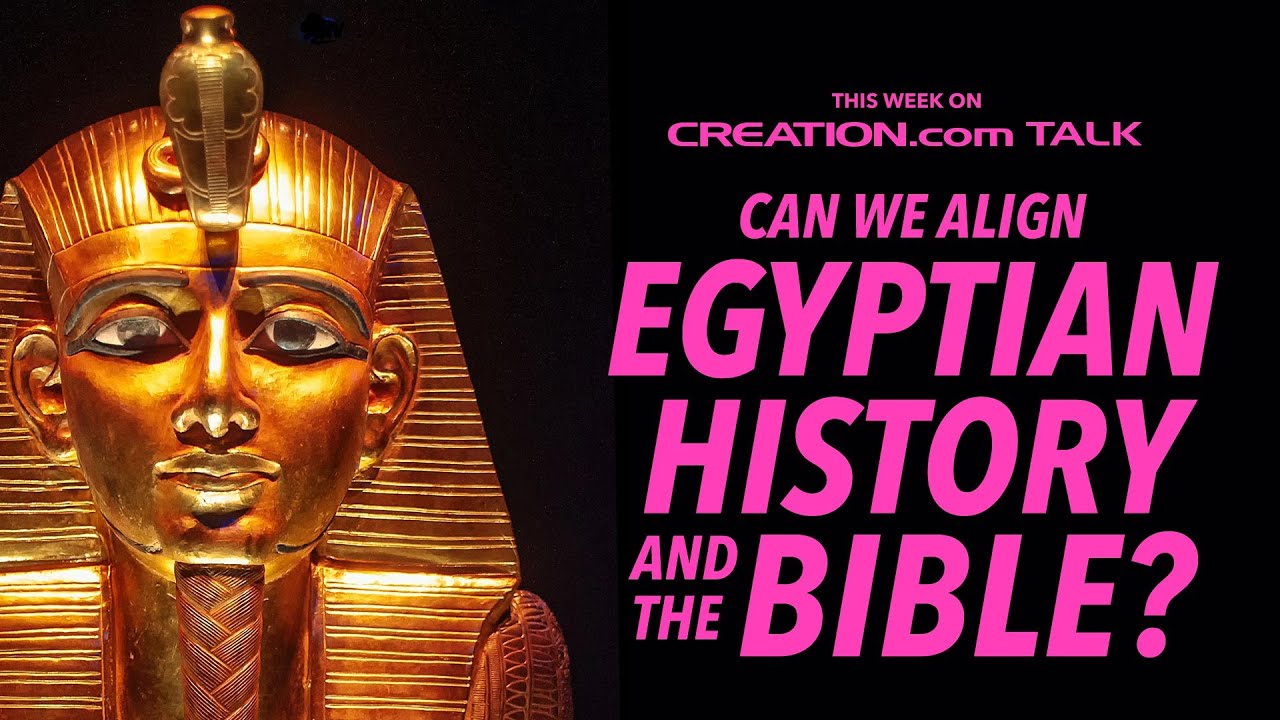




Readers’ comments
Comments are automatically closed 14 days after publication.